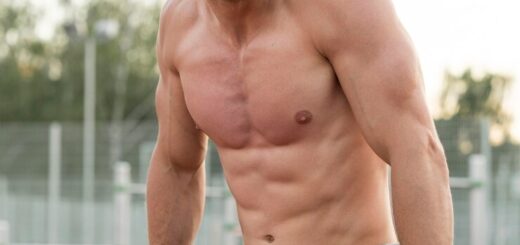Title: Unleashing the Power of Face Pull Muscles Worked: Definitions, Applications, Benefits, and

Title: Unleashing the Power of Face Pull Muscles Worked: Definitions, Applications, Benefits, and Challenges
Introduction:
When it comes to building a strong and well-defined physique, most people focus on the major muscle groups like chest, back, legs, and arms. However, there is one often overlooked muscle group that can have a significant impact on your overall strength and appearance – the face pull muscles worked.
While most people associate face pulls with just training their rear delts (deltoids), this exercise actually targets multiple muscles in the upper back and shoulders. In this article, we will delve into the world of face pull muscles worked and explore its definitions, applications, benefits, and challenges.
Definitions:
The face pull is a compound exercise that involves pulling a cable or resistance band towards your face while standing upright. It primarily targets the rear delts but also engages other muscles such as the rotator cuff, traps, rhomboids, and even biceps.
Applications:
Face pulls are commonly used by bodybuilders, powerlifters, athletes, and fitness enthusiasts to improve upper body strength and posture. It is also an effective rehab exercise for individuals recovering from shoulder injuries or looking to prevent them.
Benefits:
1. Improved Posture: The constant hunching over our phones and computers can cause our shoulders to round forward. Face pulls help strengthen the muscles in our upper back that are responsible for keeping our shoulders pulled back in proper alignment.
2. Enhanced Upper Body Strength: By targeting multiple muscles at once, face pulls can help increase overall upper body strength. This can translate into better performance in other exercises like bench presses or rows.
3. Better Shoulder Health: The rotator cuff muscles play a vital role in shoulder stability and are often neglected in traditional workouts. Face pulls help strengthen these smaller muscles along with the larger ones to prevent injuries.
4. Improved Aesthetics: Strong rear delts not only contribute to a more balanced physique but also give the illusion of a smaller waist. Face pulls can help sculpt the upper back and create that desirable V-shape.
Challenges:
As with any exercise, there are some challenges associated with face pulls. The most common one is using too much weight, which can lead to poor form and potential injury. It is important to start with a lighter weight and focus on proper technique before increasing the load.
Another challenge is neglecting other muscle groups in your training. While face pulls are an excellent exercise, they should not be the only one you do for your upper back and shoulders. A well-rounded training program that includes other exercises like rows, pull-ups, and overhead presses will provide maximum benefits.
Actionable Advice:
1. Technique First: Mastering proper form is crucial for getting the most out of face pulls while minimizing the risk of injury. Focus on pulling with your elbows and squeezing your shoulder blades together at the end of each rep.
2. Start Light: As mentioned earlier, it is essential to start with a lighter weight and gradually increase as you become more comfortable with the movement.
3. Mix it Up: Variations such as using different grip positions or incorporating pauses can add a new challenge to your workouts and keep things interesting.
4. Include Other Exercises: Incorporating face pulls into your routine is great, but don’t forget about other important muscles in your upper back and shoulders.
Conclusion:
The face pull muscles worked may be underrated, but it offers numerous benefits that can enhance both performance and aesthetics. By incorporating this exercise into your training routine along with proper form and progressive overload, you can reap its rewards while minimizing any potential challenges or risks. So next time you hit the gym, don’t forget about those rear delts!



